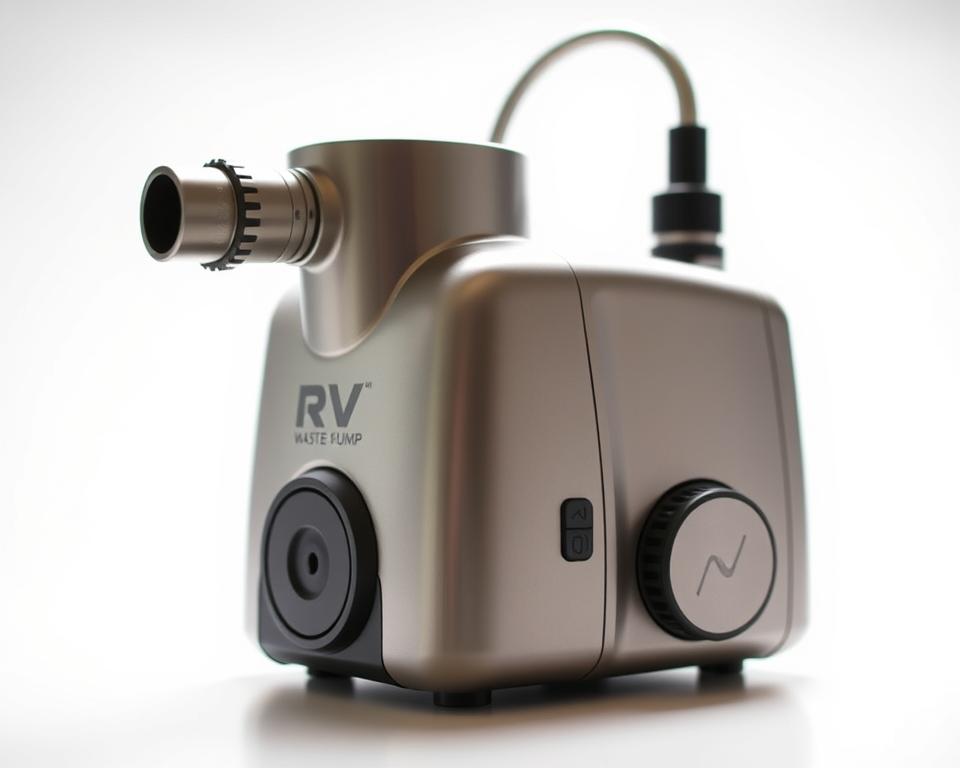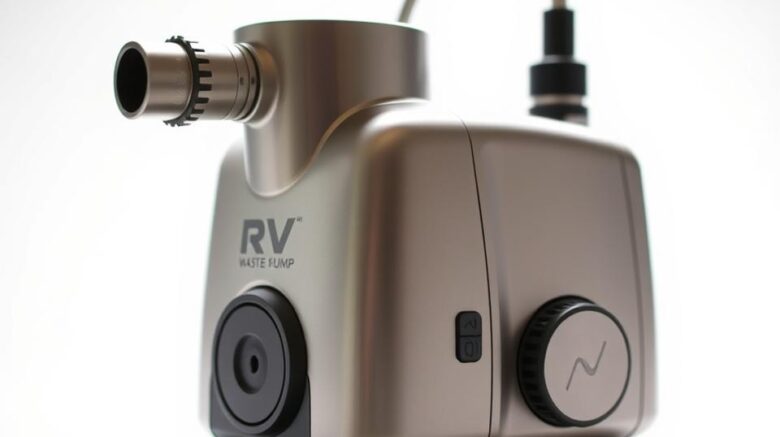RV Septic Tank Pumping: Essential Maintenance Tips
Think about the fallout from overlooking your RV’s septic system. A lot of motorhome owners dread tank emptying. Yet, realizing the importance of these maintenance practices is vital. These steps preserve your camping joy and avoid expensive repairs. Mastering correct waste handling is fundamental to your system’s longevity. We’ll share vital insights on RV waste water pump, including best practices and tips to keep your system running smoothly.
Getting to Know Your RV’s Waste Setup
Every recreational vehicle features a septic setup. It consists of a black tank for toilet use, a gray tank for sinks/showers, plus a freshwater reservoir. Knowing these components prevents clogs and ensures efficient cleaning.
A series of drain lines and vent pipes balance waste flow and airflow. Understanding this synergy helps you avoid blockages and buildup. It’s the foundation of a smooth camping experience.
Regular checks and care keep your tanks in top shape. Frequently checking tank levels and emptying on time preserves comfort. By maintaining your RV’s septic system properly, you’ll improve its lifespan and enjoy every trip more.
Why Routine Tank Pumping Matters
Routine sewage draining preserves functionality and hygiene. Waste buildup triggers odors and backups that ruin outings. A full tank can produce embarrassing backups. Such mishaps kill the fun on the road.
Skipping pump-outs leads to pricey repairs. System failures cause leaks and wear out parts prematurely. Timely emptying keeps your plumbing running smoothly. You’ll avoid nasty surprises and costly breakdowns.
Proactive servicing stops clogs. Investing in pump-outs shows you care about your RV. It greatly improves your travel experience. By sticking to a dump schedule, you’ll relish the outdoors worry-free.
Finding the Right Dump Frequency
Timing your tank dumps depends on several variables. Common guidance suggests a 3–5-day window. Still, it varies with tank size and occupancy. Pinpointing the correct dump time is key for effective wastewater management.
Dump the black tank at about two-thirds capacity. This prevents solids from clogging and keeps flow steady. Ignoring it can cause backups and unpleasant odors.
Many elements can affect how often you pump:
- Number of people on board
- Length of stay
- Type of waste generated
- Tank capacity
Planning is key to avoiding emergencies. Sync with any public dump station hours. Knowing your patterns predicts when to dump.
| Usage Scenario | Pumping Frequency |
|---|---|
| Weekend Getaway (2 people) | Every 3–4 days |
| Extended Trip (4–6 people) | Every 2–3 days |
| Seasonal Use, Two to Four Campers | Weekly or Bi-Weekly |
Monitor fill levels and usage patterns. This proactive stance ensures enjoyable travel.

Best Practices for Dumping Your Tanks
Proper methods stop odors, clogs, and expensive repairs. Begin with the black tank to avoid cross-contamination. It keeps gray water from mixing with solids.
Using a high-quality hose minimizes leaks and ensures smooth dumping. Secure all fittings firmly to avoid leaks. Once both tanks are clear, rinse the black tank thoroughly. It clears lingering waste for a cleaner tank.
Know where dump stations are located. Being prepared saves time on the road.
In short, follow these key steps for efficient dumping:
- Empty the black water tank first.
- Use a top-quality sewer hose.
- Flush the black tank thoroughly after emptying.
- Plan your dump station locations.
Following these guidelines simplifies black tank maintenance.
Tank Handling and Upkeep Best Practices
Grasping correct handling of black and gray tanks ensures system health. Keep some water in the black tank for better breakdown.
Refrain from disposing non-biodegradable items. Use only RV-compatible paper. Inspect tanks often to catch problems early.
Occasional treatments boost system performance. They introduce microbes that digest solids effectively. Simple steps ensure smooth tank operation.
- Check for leaks and damage often.
- Apply RV-specific chemical treatments.
- Keep vents clear to avoid odors.
Adhering to these practices safeguards your system. It also boosts your camping enjoyment.
Essential Pumping Tips
Successful pumping requires precision and a clear procedure. It’s essential to use designated dump stations. Understanding volume limits prevents spills on the go.
Check tank indicators regularly to time pump-outs. Routine scheduling preserves your septic system and travel enjoyment. A planned maintenance routine keeps everything running smoothly.
Flush well after every emptying. It ensures each dump is cleaner than the last. Such tactics keep your rig in top shape and improve your travel experiences.
Avoid These Septic System Errors
Maintaining your system is vital for uninterrupted camping. Not using enough water in the black tank leads to buildup. Adequate water use breaks down solids efficiently.
Flushing inappropriate items blocks pipes. Avoid non-dissolvable products like feminine hygiene items. Such mistakes can damage plumbing and inflate repair bills.
Keep the black tank valve closed until ready to dump. Open valves let water out but hold solids, causing residue. Only open when ready to empty for a complete clean.
Awareness of these errors boosts system longevity. Avoiding them keeps your waste management reliable.
When to Call in Professional RV Waste Disposal Services
Knowing when to hire pros preserves system health. Lingering smells can mean serious tank problems. Tanks that empty sluggishly hint at internal blockages.
Waste spillage near dump sites signals trouble. Such situations usually need high-pressure cleaning. Experts use specialized tools to clear stubborn clogs.
Regular expert check-ups safeguard tank health. Early intervention avoids expensive failures. Hiring qualified technicians saves time and money long term.
Sustainable Waste Management Strategies
Long-term strategies sustain wastewater efficiency. Regular pumping boosts system life and function. Flushing often prevents buildup and costly repairs.
Adopting sanitation routines protects your system. Inspecting connections stops leaks before they spread. Choosing eco-friendly treatments avoids damage.
Keep these habits in mind:
- Stick to a pump-out timetable.
- Rinse often to remove solids.
- Sanitize twice a year.
- Inspect parts frequently for wear and tear.
Investing in prevention brings peace of mind. Through consistent upkeep, you’ll enjoy travel free from waste worries.
The Bottom Line
Good septic care ensures enjoyable trips. Knowing system function and cleaning steps stops issues. Regular black tank maintenance improves efficiency. This makes your journey more comfortable.
Consistent inspections and care deliver trouble-free trips. This reliability supports every outing. Adopting these habits keeps your RV ready to roll. So you can focus on making memories, not dealing with tanks.
